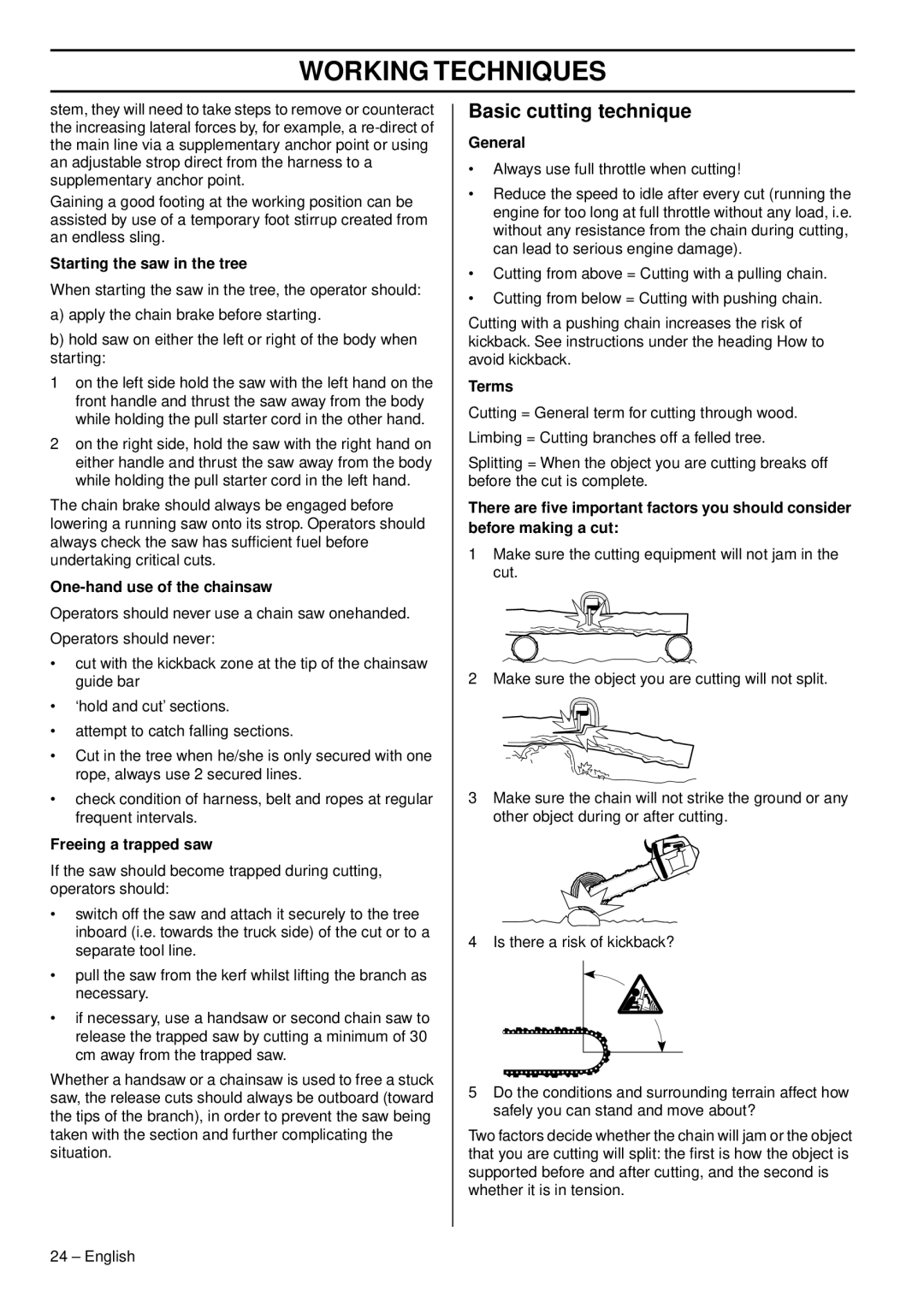1151375-95, 338XPT EPA III specifications
The Husqvarna 338XPT is a powerful chainsaw designed specifically for professionals who require reliability and performance in demanding environments. One of its standout features is the lightweight design, making it easy to maneuver while still delivering impressive power. Weighing in at just over 10 pounds, the 338XPT allows users to work for extended periods without fatigue, making it an ideal choice for arborists and forestry workers.At the heart of the Husqvarna 338XPT is its efficient engine, which not only provides robust cutting performance but is also designed with EPA III compliance in mind. This means the machine adheres to strict environmental regulations, producing lower emissions while ensuring a high power output. The X-Torq engine technology is one of the key innovations that contribute to its efficiency. This technology reduces fuel consumption by up to 20% while also decreasing harmful exhaust emissions. This dual benefit makes the 338XPT a viable option for users who prioritize both performance and environmental responsibility.
Another notable characteristic of the Husqvarna 338XPT is its advanced air filtration system, which enhances the durability of the engine by ensuring that only clean air reaches it. The centrifuge air cleaning system significantly prolongs the time between filter cleanings, allowing users to focus more on their work and less on maintenance. This feature is particularly beneficial in dusty or dirty job sites, ensuring optimal performance in various conditions.
Comfort and usability are also central to the design of the 338XPT. The chainsaw includes an ergonomic handle that allows for better control during operation, reducing vibrations and enhancing user comfort. Additionally, the chainsaw's easy-access chain tensioning system makes adjusting the chain as simple as possible, ensuring that users can quickly get back to their tasks at hand without unnecessary delays.
For safety-conscious users, the Husqvarna 338XPT is equipped with features like a combined choke/stop control that allows for easy starting and reduces the risk of engine flooding. Furthermore, the chainsaw's inherent balance and lightweight structure contribute to safer handling and operation.
In summary, the Husqvarna 338XPT EPA III is a top-of-the-line chainsaw that combines power, efficiency, and user-friendly features, making it a prime choice for professionals in the forestry and arborist fields. Its robust engine technology, advanced air filtration, and ergonomic design ensure that you can tackle any job with confidence and ease.

